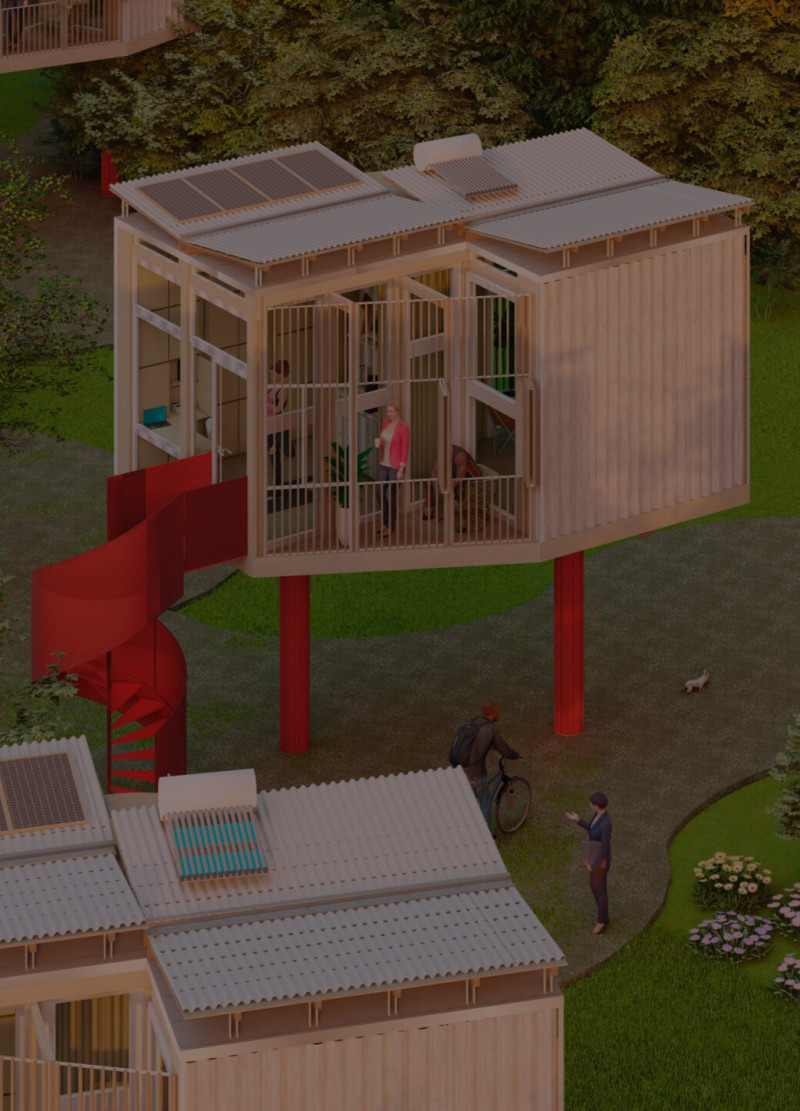5 key facts about this project
This project represents a commitment to user-centric design, prioritizing the needs of its occupants while simultaneously engaging with the natural landscape. The overall design emphasizes openness and connectivity, allowing users to transition smoothly between indoor and outdoor spaces. Large fenestrations make the most of natural light and foster a visual connection with the external environment, enhancing the overall experience while reducing energy consumption through passive solar strategies.
One of the project's defining characteristics is its innovative material palette. The use of reinforced concrete provides structural integrity, while large glass panels create a seamless relationship with the outside world. Encased in warm wood accents, the building creates a balance between modernity and comfort. The inclusion of eco-friendly materials, such as recycled elements and sustainable insulation, highlights the project's dedication to environmentally conscious practices.
The layout of the building reflects an adaptable approach to space. By employing an open floor plan, the design encourages flexibility, allowing for varied uses depending on the occupants' needs. This fluidity not only enhances functionality but also adapts to changing requirements over time. Thoughtfully arranged communal areas promote social interaction, making this space conducive to collaboration and community engagement.
A unique aspect of this architectural design is its response to the local climate and geography. The strategic placement and orientation of the building minimize heat gain during summer while maximizing solar exposure in winter, demonstrating a clear understanding of environmental dynamics. Green roofing components not only contribute to thermal performance but also promote biodiversity and manage stormwater runoff, further reinforcing the project’s ecological responsibility.
The architectural design also incorporates innovative facade treatments. Screens and shading devices are integrated into the building's exterior, allowing for adjustments based on the time of day and season. This dynamic feature enhances the user experience by providing control over light and temperature, improving comfort while minimizing reliance on mechanical heating and cooling systems.
As the project was developed, special attention was also given to accessibility and inclusivity. Pathways, entrances, and internal spaces are designed to be easily navigable for all users, ensuring that the facility can be utilized by a diverse demographic. This commitment to accommodating various needs enhances the overall usability of the space.
The project successfully combines aesthetic, functional, and sustainable design principles, creating a cohesive architectural statement that resonates with its surroundings. The thoughtful integration of materials, consideration of environmental factors, and a commitment to user engagement illustrate a robust design philosophy that prioritizes both form and function.
For those interested in exploring this project further, I encourage you to review the architectural plans, sections, designs, and various architectural ideas that underpin this comprehensive endeavor. These elements provide valuable insights into the careful thought and planning that characterize this architectural achievement.


 Johanna Ailen Ferreyra
Johanna Ailen Ferreyra 























